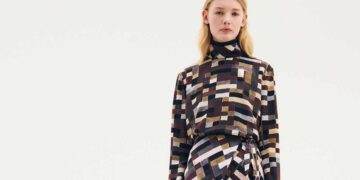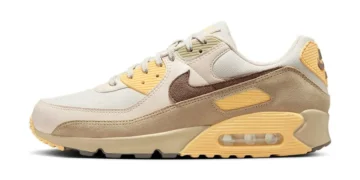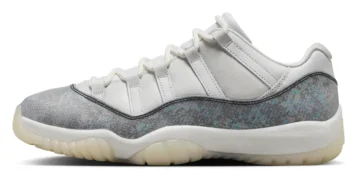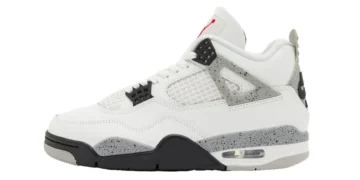
Ruslan Baginskiy, the acclaimed Ukrainian headwear designer, had an unconventional journey from studying Geography to becoming a major figure in the fashion industry. Baginskiy’s career started with a growing passion for styling and creative projects, which eventually led him to design his own headpieces when he couldn’t find anything that matched his vision. This creative experimentation laid the groundwork for the launch of his brand in 2015, which has since become a beloved name in the world of fashion.
INTERVIEWS
In this exclusive interview for DSCENE Magazine with our Editor, Pavle Banovic, Baginskiy shares insights into the influences that have shaped his work, including his recent collaboration dedicated to Ukrainian modernist sculptor Mykhailo Dzyndra. His ability to draw inspiration from a wide array of sources, from traditional Ukrainian crafts to the iconic visual identities of stars like Madonna and Beyoncé, shows his creative approach to art and fashion. Looking to the future, Baginskiy expresses a desire to continue innovating and exploring new creative avenues, whether through expanding his product offerings or by creating experiences that engage directly with his audience.

You originally studied Geography before transitioning to styling fashion shoots and entering the fashion industry. How did this shift happen, and what specifically drew you to headpieces?
I still think it’s wild that people are expected to know what they will be doing for the rest of their lives at the age of 18. It’s really great if you do of course, but that wasn’t my case. Geography was an interest at that time but not a passion. When I was studying I started working here and there on creative projects and styling, progressively discovering my love for fashion. I often wanted to use headpieces in my projects and couldn’t really find anything I liked, so I started making my own. I started learning. That was the beginning.
The Ruslan Baginskiy brand was created in 2015 and has since become widely popular. What was the best advice you received along the way?
I wish there was one piece of advice that I could highlight and share with you. Honestly nothing like that comes to mind. For me it’s kind of about being out there and receiving the most advice possible and I’m thankful for it all. The good and the bad. It’s really about listening and making your own sense of it. Following it or realizing that’s actually what you really don’t need or want to do. That’s probably what helped me find my path and still does.

What does your creative process look like? Do you have a singular design philosophy that you always follow?
My creative process begins with inspiration. That can come from anywhere — it can be something I’ve been thinking about for years or something I just saw on a walk 5 minutes ago. There is no singular design philosophy; I like each project to find its own path, depending on what the project is. That’s the creative and fluid side of things. It all follows through thanks to routine. Putting in the work, trying over and over again. It’s what brings results in the long run.
Your latest project is a collaboration dedicated to the legacy of Ukrainian modernist sculptor Mykhailo Dzyndra. What did you find most inspiring in his work, and how did you connect it with your own artistry?
I have always been interested in sculpture and have viewed headwear as sculptural objects. All the hats featured in the project with Dzyndra Museum is my dialogue with the palette and volumes of the modernist sculptor. He’s made a really big contribution to Ukrainian art history – bringing all his monumental sculptures back to Ukraine in the early 90s (as soon as he heard Ukraine declared its independence); building a museum for everyone to see with his own funds. It was incredibly hard to make it possible at that turbulent time for the country. Part of the idea was to pay tribute to his dedication of living as a creative and sharing his world with others.

Tell us more about your experiences working with Madonna and Beyoncé, for whom you created headpieces for their most recent tours.
Working with icons like Madonna and Beyoncé has been literally unbelievable. Their visual identities are so strong it’s hard to put into words but working with them involved understanding and translating their vision into headpieces; complementing them but also everything going on on stage. In both cases it was a blend of creativity, technical skill, and working with artistic narratives. The process was challenging and it pushed me to innovate and refine a lot. I’m super thankful.
Originally starting with hats, you have now broadened your assortment to include different accessories, such as a bag/hat transforming piece. How do you approach the various projects you create?
I think it’s all about creating something new! It’s the hardest part of my work but also makes me happiest. When we first released the ‘HatBag’ – the hat-to-bag transformer accessory, it was so great to see the excitement it created for people – for the RB community, for my friends in the industry. Whether it’s a new concept or a new category for us, it inspires me so much to make new things happen. And I’m always on that search.

The village of Iza has served as a longtime inspiration for you, and its weaving techniques have influenced your recent work. What was the process of translating a traditional craft into your contemporary designs like?
Part of my mission is to talk about my home. It’s had a really rough past and the present is no easier at the moment. At the same time, somehow we kept beauty in our hearts and around us no matter how hard the environment was. We know about craft work of Italy, Spain, France, its value and role in the fashion industry. In Ukraine, we have several fields of incredible craftwork but no real recognition of those stories. The village of Iza has a weaving technique that’s protected by UNESCO as intangible heritage of Ukraine. And it dates back – the painter Renoir used to buy woven furniture made there. I want to include those techniques into the modern shapes we make, Iza is one example.
Are there any designers you look up to or who serve as inspirations for your own work?
All the big names in fashion history have of course inspired me. I think you know them all. But lately I have been looking more into art like with Dzyndra in Ukraine, or multidisciplinary artist Gaetano Pesce.

What is next for you? What have you been thinking about recently?
This question involves so many different layers – design, communication, business choices, and direction. If we talk about simply something that excites me – I’d love to do an event of some kind. Creating real-life moments and interaction is really important to me, I’d love to do something with that.



















